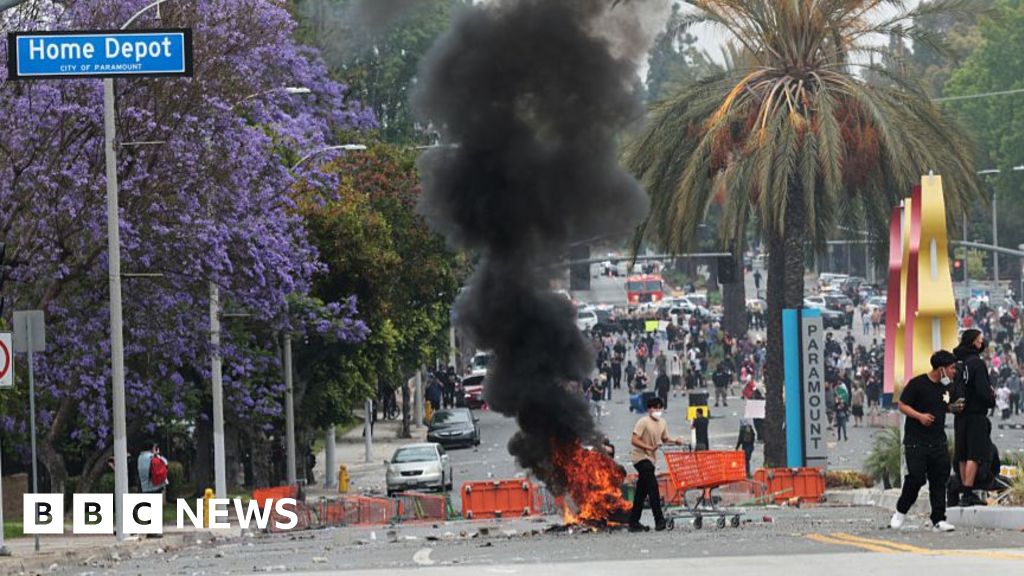Ukrainian security services conducted a massive drone attack against Russian military airbases on Sunday, striking thousands of kilometres from the front line in what President Volodymyr Zelensky said was their longest-range operation ever.
The operation, code-named “Spider’s web”, required months of preparation and the smuggling of drones into Russian territory.
Here is what we know about the attacks, which occurred on the eve of talks in Istanbul between Russia and Ukraine to explore the prospects for a ceasefire.
Damage
Ukraine has claimed significant damage but for now it is impossible to verify independently.
A source in Ukraine’s SBU security service said the coordinated attacks hit 41 aircraft used to “bomb Ukrainian cities”, citing the Tu-95 and Tu-22 strategic bombers and the A-50 radar detection and command aircraft.
Russia’s defence ministry confirmed that “several aircraft caught fire” following a drone attack at bases in the regions of Murmansk and Irkutsk, located in the Russian Arctic and eastern Siberia.
The fires were contained, the ministry said, and caused no casualties, adding that suspects had been “arrested”.
Ukrainian security services said they destroyed 34 percent of Russian strategic bombers carrying cruise missiles, claiming to have inflicted damages amounting to $7 billion.
Modus operandi
The “Spider’s web” operation was prepared for over a year and a half, the Ukrainian SBU source said, adding that it had required particularly complex logistics.
Ukraine regularly launches drones to strike targets in Russia in response to the Russian invasion of 2022, but the modus operandi used this time was different.
The Ukrainian security source said drones had been smuggled into Russia and hidden in wooden structures installed on trucks.
The structures’ roofs were then opened remotely to let the drones fly toward their targets.
Photos shared by the SBU show numerous small black drones hidden in what appears to be transport containers.
Russia’s defence ministry confirmed that the drones were not launched from Ukrainian territory but “in the immediate vicinity of the airbases”.
Longest-range ever
Zelensky on Sunday hailed the operation’s “brilliant” results in what he called “our most long-range operation” in more than three years of war.
Using 117 drones, Ukraine was able to reach regions thousands of kilometres from the front, when its attacks generally focus on areas close to its borders.
Two of the airbases Ukraine said it had hit, Olenya and Belaya, are around 1,900 kilometres (1,180 miles) and 4,300 kilometres from Ukraine. The first is located in the Russian Arctic, the other in eastern Siberia.
The Russian ministry said it successfully countered other attacks in the regions of Ivanovo and Ryazan as well as in Amur, near the border with China in the Russian Far East.
Consequence and symbolism
The consequences of the attacks on Russian military capabilities are difficult to estimate at this stage.
Ukraine suffers from almost daily air attacks that have strained its air defence capabilities in recent weeks.
Russian military bloggers lamented a “black day for aviation” after the Ukrainian attack.
Rybar, an account on the Telegram messaging platform that is close to the Russian military, called it a “very heavy blow” and pointed to what it called “serious errors” by Russian intelligence.
But the symbolic significance is important for Ukraine, whose army has been facing setbacks on the front.
Former Ukrainian president Petro Poroshenko, now an opposition figure, said there were “no better arguments” for Ukraine on the eve of talks with Moscow in Istanbul.
(FRANCE 24 with AFP)











 English (US) ·
English (US) ·